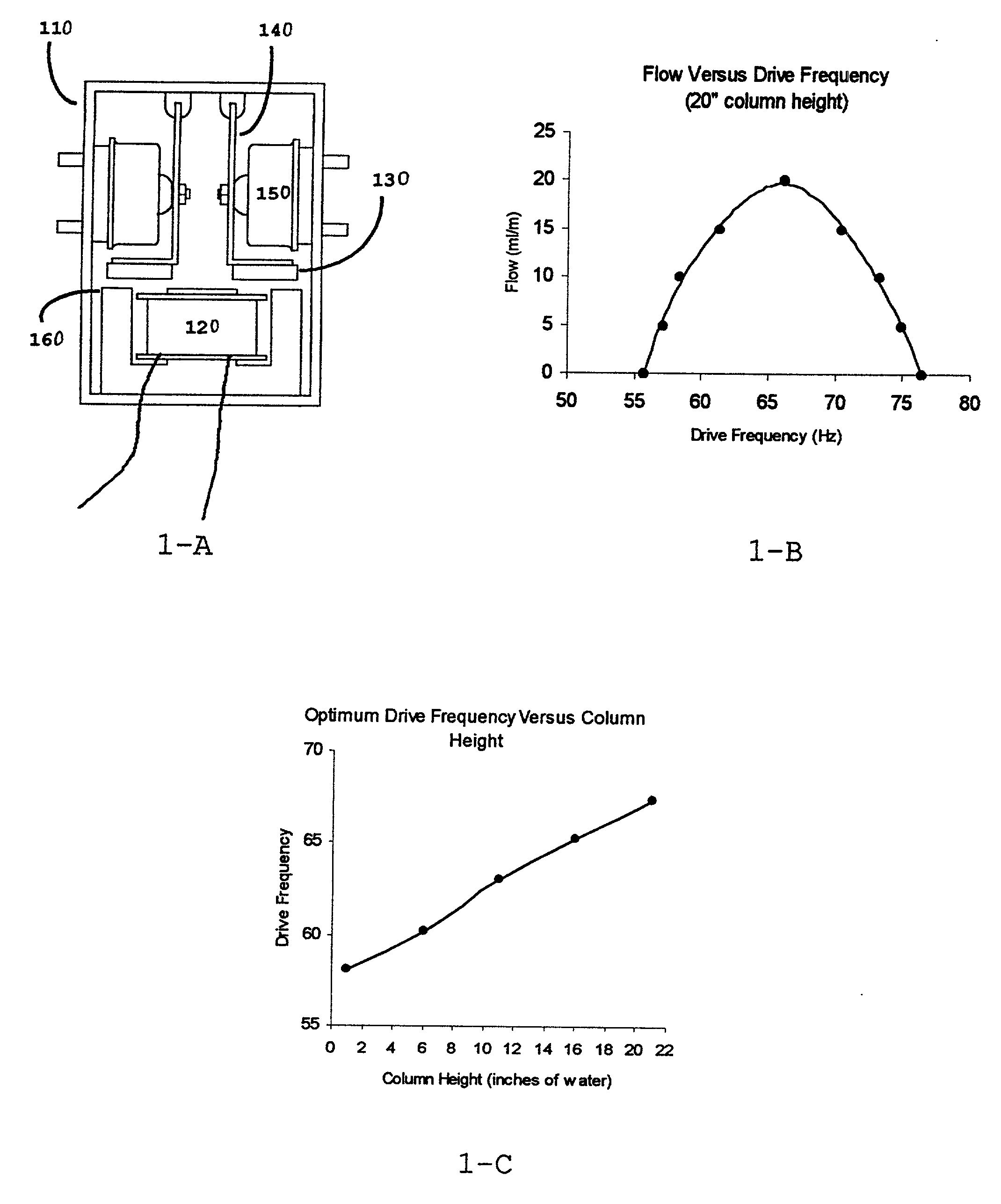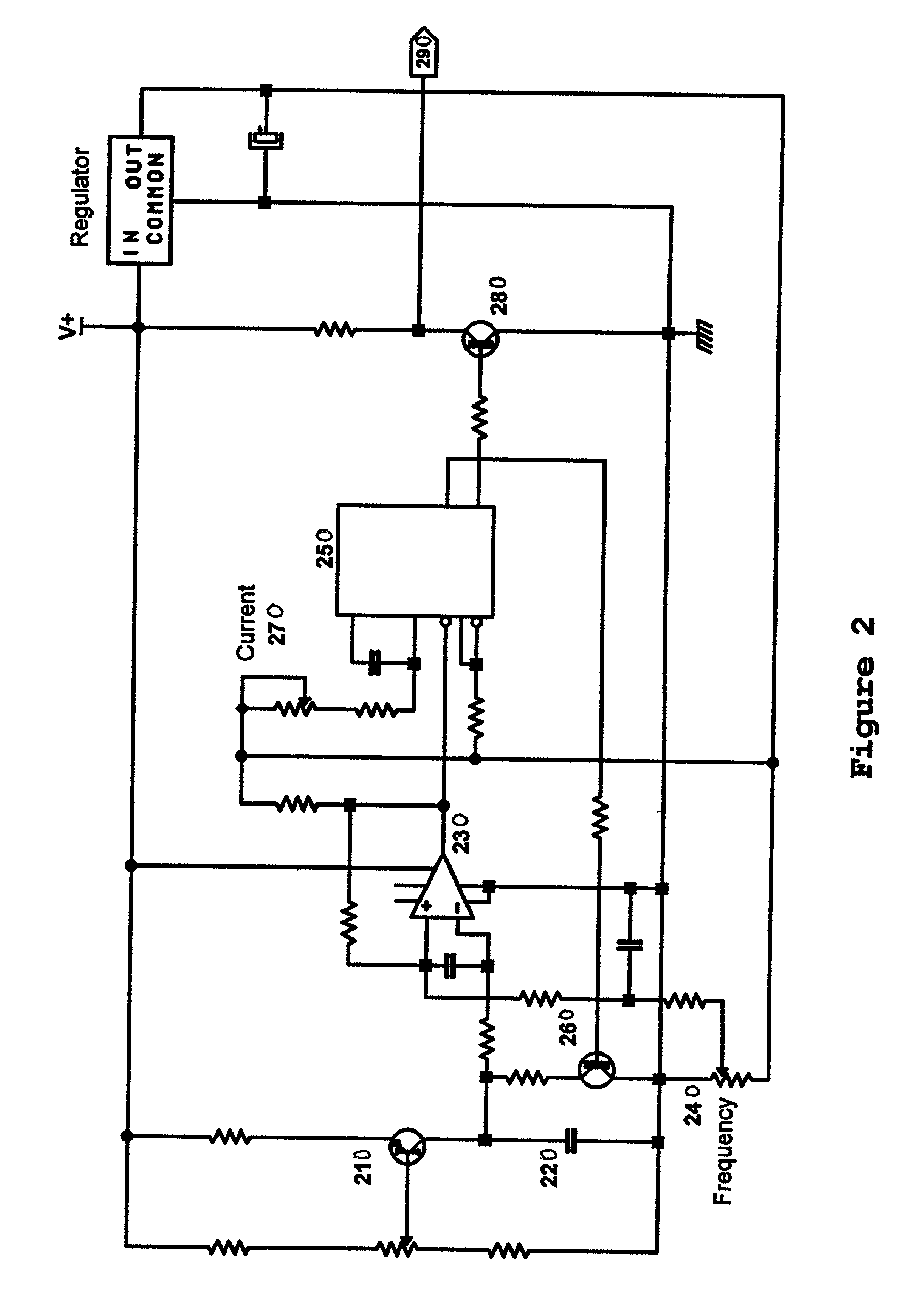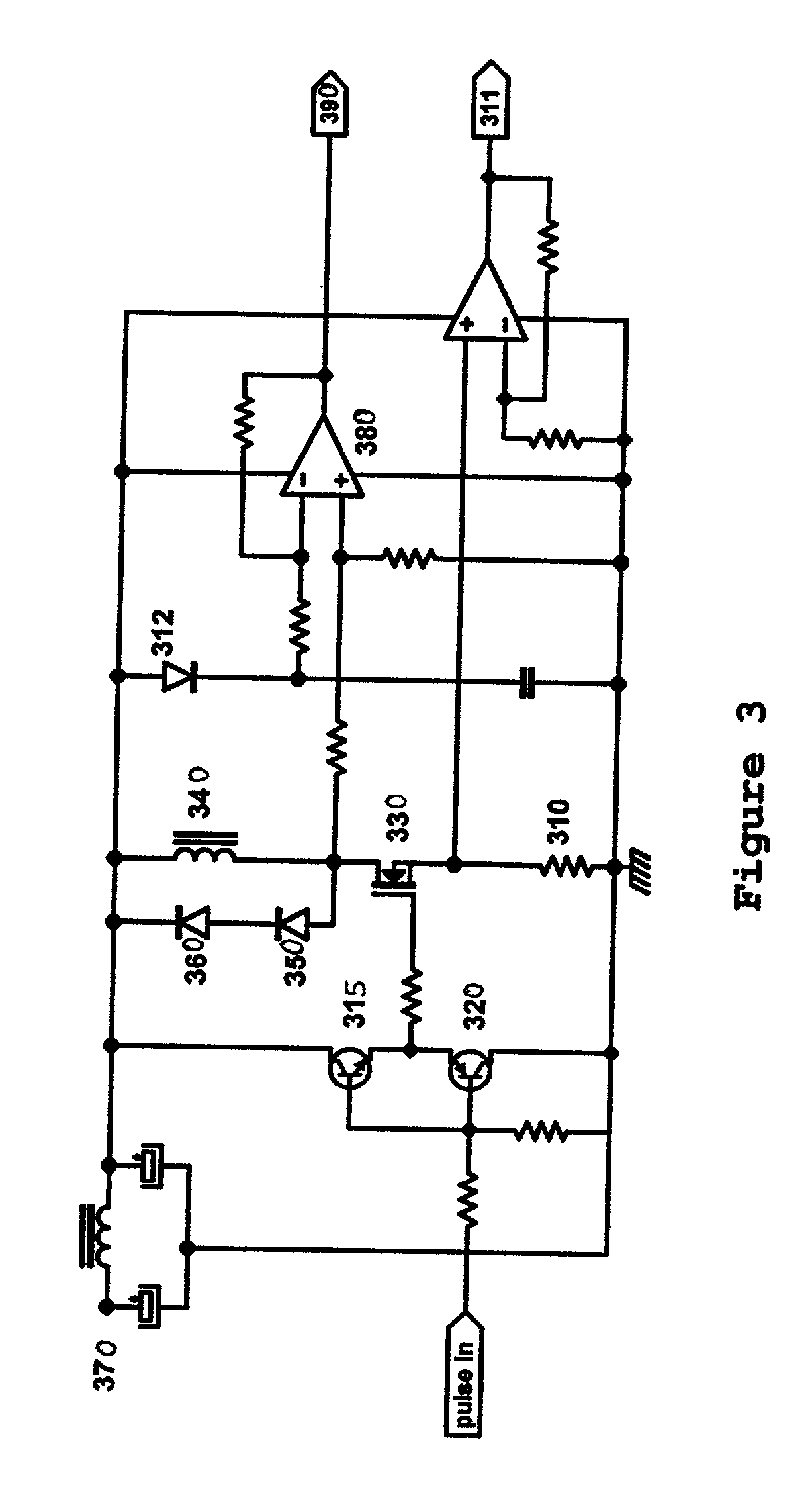Automatic optimizing pump and sensor system
a sensor system and automatic optimization technology, applied in the direction of machines/engines, pump control, positive displacement liquid engines, etc., can solve the problems of not being able to teach the use of signals, not being able to teach the operation frequency adjustment, and not being able to teach manual control or automatic control, etc., to achieve easy installation, de-installation, transport
- Summary
- Abstract
- Description
- Claims
- Application Information
AI Technical Summary
Benefits of technology
Problems solved by technology
Method used
Image
Examples
Embodiment Construction
[0096] The preferred embodiment of the invention includes a reciprocating electromagnetic pump mechanism comprising one or more arms with magnet(s) attached to one end of the arm(s) such that the arm(s) may be vibrated under the influence of an electromagnetic field, that field being produced by the periodic flow of current in a coil wound about a bipolar or tripolar core. The vibration of the arm(s) being mechanically coupled to diaphragm(s) incorporating valves and ports such that a vacuum is created at one port and, simultaneously, a pressure is created at another port. The time the current flows through the coil is made to be short so that the magnets are impelled during either the vacuum or pressure stroke but are not impelled during the reciprocal stroke, the reciprocal stroke being completed by the spring energy stored in the arm / magnet / diaphragm system
[0097] During the reciprocal stroke the motion of the magnet(s) near the core induces a voltage in the coil that is proportio...
PUM
 Login to View More
Login to View More Abstract
Description
Claims
Application Information
 Login to View More
Login to View More - R&D
- Intellectual Property
- Life Sciences
- Materials
- Tech Scout
- Unparalleled Data Quality
- Higher Quality Content
- 60% Fewer Hallucinations
Browse by: Latest US Patents, China's latest patents, Technical Efficacy Thesaurus, Application Domain, Technology Topic, Popular Technical Reports.
© 2025 PatSnap. All rights reserved.Legal|Privacy policy|Modern Slavery Act Transparency Statement|Sitemap|About US| Contact US: help@patsnap.com



